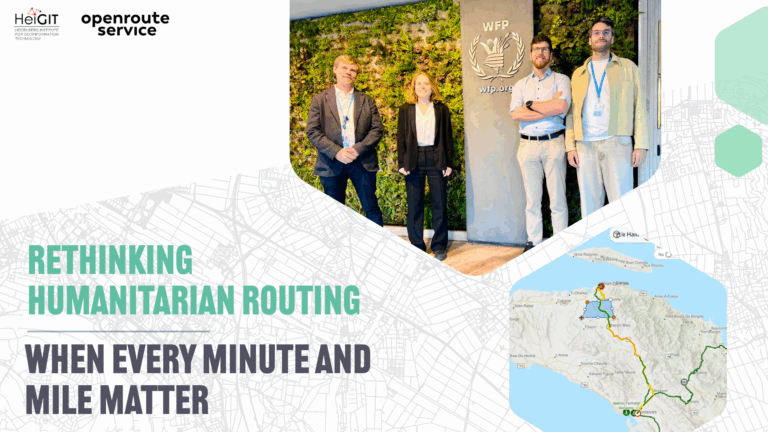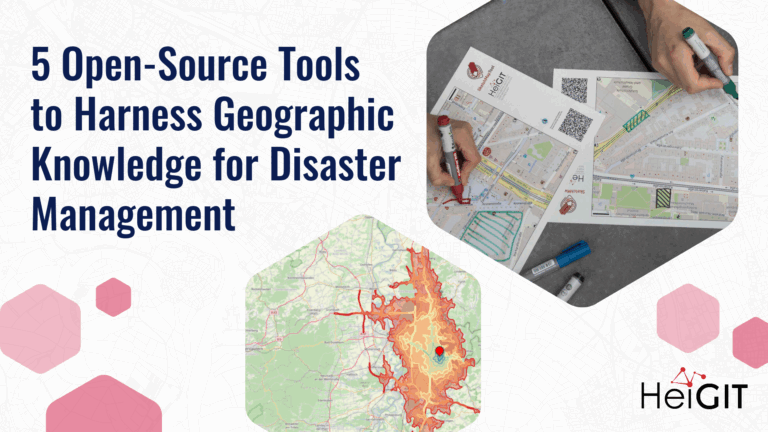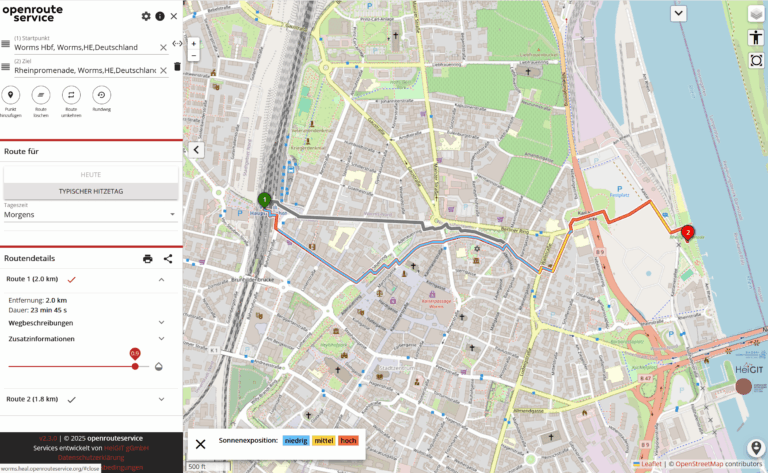Introduction
In an era where technology continuously reshapes our world, the fusion of artificial intelligence and geospatial data offers exciting possibilities. HeiGIT (Heidelberg Institute for Geoinformation Technology), a pioneering research organization, has unveiled a novel web application that not only simplifies navigation but also empowers users to access a wealth of location-based data. This proof-of-concept application, driven by ChatGPT v3.5, allows users to interact naturally in plain text, irrespective of language, to request information related to routing, location, and more. Let’s have a look into how this innovative application works and explore some fascinating use cases.
The Genesis of an Idea
HeiGIT’s web application was conceived from the desire to make geospatial data more accessible and user-friendly. Traditional navigation systems often require users to follow a structured sequence of steps, limiting their ability to interact naturally. This project aims to overcome this limitation by creating a platform where users could simply state their requests in plain text.
How it Works
At the core of HeiGIT’s web application is ChatGPT v3.5, a powerful language model capable of understanding and responding to user requests. The application uses ChatGPT to extract crucial information from user queries, such as the route start, destination, mode of transport, range, and other pertinent details. Here’s how it all comes together:
-
User Request: Users input their navigation and location-based queries naturally, just as they would ask a friend for directions or information. For example:
-
“Show me all museums within a 5-minute walk from Heidelberg Castle in Germany.”
-
“Route me from HITS to HeiGIT by foot.”
-
Video 1: POI in Isochrone Example
Video 2: Routing Example
- Language Processing: ChatGPT processes the user’s request, identifying key elements such as the starting point, destination, preferred mode of transport, range, and more.
- Harnessing Geospatial Services: HeiGIT’s application seamlessly integrates powerful geospatial services, including Nomatim, OpenRouteService, and the ohsome API. These services play a vital role in obtaining geospatial data, including location tags (e.g., museums, hospitals) from OpenStreetMap (OSM) and generating isochrone polygons for reachable areas within specified distances or times.
- Nomatim:
- Geocoding: Nomatim is a geocoding service that translates user-friendly location queries (like “Heidelberg Castle in Germany”) into precise geographic coordinates (latitude and longitude). It allows the application to understand where a place is located on the Earth’s surface.
- OpenRouteService:
- Routing and Isochrones: The route is created using HeiGIT’s already existing and proven OpenRouteService (ORS). The ORS is a versatile geospatial service that handles routing and isochrone generation. Routing involves finding the best path between two points (e.g., from Rohrbach train station to Mathematikon on foot). Isochrones, on the other hand, are polygons that depict the areas that can be reached within specific time or distance constraints. For example, it can compute a polygon that shows all the areas you can walk to from a particular point in 5 minutes. The ORS provides not only the routes but also valuable information about the reachable areas around a starting point.
- ohsome API:
- OpenStreetMap Data Access: HeiGIT’s ohsome API plays a pivotal role in this ecosystem by enabling seamless access to the extensive OpenStreetMap (OSM) database, renowned as one of the most comprehensive geospatial data sources. Through the ohsome API, specific geographic features within OSM, such as museums, hospitals, and other tagged locations, are extracted using unique tags and attributes. This capability empowers the application to dynamically retrieve and present detailed information concerning nearby points of interest, including museums and hospitals, in direct response to user queries. It’s noteworthy that ChatGPT is employed to generate ohsome filters, which are utilized for the precise extraction of information from the ohsome API, further enhancing the application’s ability to access and present OSM data effectively.
- Nomatim:
- Data Retrieval: The application interfaces with these services to fetch real-time data, such as mapping information, distances, points of interest, and OSM tags like museums, hospitals, and more.
- User-Friendly Response: Once the data is retrieved, the application compiles it into a user-friendly response. Users receive information tailored to their requests, often in the form of interactive maps or detailed directions, including OSM feature information.
The Future of Geospatial Data Access
HeiGIT’s innovative web application represents a significant leap toward a more accessible and intuitive approach to geospatial data access. By combining the power of AI with geospatial services, users can effortlessly access the information they need, no matter where they are or what language they speak.
In a world where simplicity and accessibility are paramount, HeiGIT’s web application is a significant milestone, demonstrating how cutting-edge technology can enhance the way we explore and navigate our surroundings. Beyond navigation, this application unlocks the potential for richer and more informed location-based decisions, thanks to the seamless integration of ohsome API, providing access to OpenStreetMap’s invaluable feature information.
Embark on a journey with GeoPrompt. Experience seamless navigation and unlock a world of geospatial insights. Have specific queries or eager to explore its capabilities? Contact us today and navigate the world with ease.




